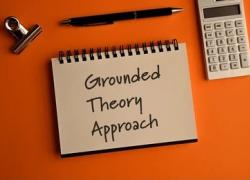Similarities and Key Differences between Case Study and Historical Research Design
Both case study and historical research design share qualitative methodologies that involve in-depth exploration and a contextual understanding of their subjects. They both employ rich data collection methods, emphasizing the importance of holistic perspectives and participant-centered approaches.
However, key differences arise in their temporal focus and scope. Case studies typically concentrate on present or recent instances, providing detailed insights into specific cases, while historical research design spans a longer time frame, examining historical events and trends with a broader contextual lens.
The unit of analysis also varies, with case studies focusing on individual cases and historical research analyzing events and developments over time. While both contribute to a nuanced understanding of their subjects, case studies tend to yield practical insights for immediate application, whereas historical research design contributes to a broader understanding of historical processes. Both methodologies prioritize the unique characteristics of their subjects, whether a specific case or historical events, and involve an interpretive process to derive meaning.
However, key differences lie in their temporal dimensions and scope; case studies focus on the present or recent past with a narrow scope, analyzing specific instances, while historical research design spans a longer time frame, addressing broader historical events and developments. The unit of analysis differs, with case studies examining a specific case, and historical research considering historical events and their implications. Additionally, the purposes diverge, as case studies aim for practical insights, while historical research contributes to a broader understanding of historical processes with potential generalizability.
These distinctions underscore the nuanced applications of each approach in research contexts. In this blog post, we highlight some of the apparent similarities and key differences between case study and historical research design. But first of all, let us discuss some of the obvious similarities between the two research designs.
Similarities between Case Study and Historical Research Design
- Qualitative nature:
- Both case study and historical research design are qualitative research methods. They involve in-depth analysis and interpretation of data to gain a nuanced understanding of the subject matter.
- Both case study and historical research design are qualitative research methods. They involve in-depth analysis and interpretation of data to gain a nuanced understanding of the subject matter.
- Rich data collection:
- Both methodologies often involve the collection of rich and detailed data. This can include sources such as documents, artifacts, interviews, and observations, allowing for a comprehensive exploration of the subject.
- Both methodologies often involve the collection of rich and detailed data. This can include sources such as documents, artifacts, interviews, and observations, allowing for a comprehensive exploration of the subject.
- Contextual understanding:
- Both approaches emphasize the importance of context in understanding the phenomena under investigation. Case studies consider the real-life context of a specific instance, while historical research delves into the historical context surrounding events and developments.
- Both approaches emphasize the importance of context in understanding the phenomena under investigation. Case studies consider the real-life context of a specific instance, while historical research delves into the historical context surrounding events and developments.
- Holistic approach:
- Both case study and historical research take a holistic perspective. They aim to provide a comprehensive understanding of the subject, considering various aspects, relationships, and influences.
- Both case study and historical research take a holistic perspective. They aim to provide a comprehensive understanding of the subject, considering various aspects, relationships, and influences.
- In-depth exploration:
- Both methodologies involve an in-depth exploration of the subject matter. Case studies seek to provide a detailed examination of a particular case, while historical research aims to understand events and their significance over time.
- Both methodologies involve an in-depth exploration of the subject matter. Case studies seek to provide a detailed examination of a particular case, while historical research aims to understand events and their significance over time.
- Analysis of multiple data sources:
- Both approaches often require the analysis of multiple data sources. Researchers in case studies and historical research may examine various documents, artifacts, and other forms of evidence to construct a detailed narrative.
- Both approaches often require the analysis of multiple data sources. Researchers in case studies and historical research may examine various documents, artifacts, and other forms of evidence to construct a detailed narrative.
- Emphasis on specificity:
- Both methodologies often focus on specificity. Case studies delve into a particular instance or bounded system, while historical research aims to understand specific historical events and their impact.
- Both methodologies often focus on specificity. Case studies delve into a particular instance or bounded system, while historical research aims to understand specific historical events and their impact.
- Interpretive nature:
- Both case study and historical research involve an interpretive process. Researchers analyze and interpret the data to derive meaning and insights, recognizing the subjective nature of their interpretations.
- Both case study and historical research involve an interpretive process. Researchers analyze and interpret the data to derive meaning and insights, recognizing the subjective nature of their interpretations.
- Contributions to theory development:
- Both methodologies have the potential to contribute to theoretical understanding. Case studies may generate insights applicable to broader contexts, and historical research can contribute to the development of historical theories or perspectives.
- Both methodologies have the potential to contribute to theoretical understanding. Case studies may generate insights applicable to broader contexts, and historical research can contribute to the development of historical theories or perspectives.
- Unique contextualization:
- Both approaches involve the unique contextualization of the subject matter. Case studies contextualize a specific instance within its real-world setting, while historical research contextualizes events within the historical period in which they occurred.
Understanding these similarities can help researchers appreciate the commonalities in their qualitative approaches and adapt their methods accordingly, depending on whether they are conducting a case study or historical research.
Case studies and historical research design differ primarily in their focus and scope. While historical research design adopts an observational stance, contributing to theoretical perspectives and a comprehensive understanding of historical phenomena, the unit of analysis also varies, a great deal with case studies. These distinctions highlight the nuanced applications of each approach in research contexts. In the next section of this write-up, we discuss key differences between case study and historical research design
Key differences between Case Study and Historical Research Design
- Time dimension:
- Case Study: Primarily focuses on the present or recent past, examining a specific instance or bounded system within its current or recent context.
- Historical Research Design: Focuses on the past, exploring events, developments, and phenomena within a historical context, often involving a longitudinal perspective.
- Case Study: Primarily focuses on the present or recent past, examining a specific instance or bounded system within its current or recent context.
- Scope:
- Case Study: Typically has a narrower scope, concentrating on a specific case or bounded system to provide an in-depth understanding.
- Historical Research Design: Encompasses a broader scope, aiming to understand historical events, trends, and their implications over a longer period.
- Case Study: Typically has a narrower scope, concentrating on a specific case or bounded system to provide an in-depth understanding.
- Unit of analysis:
- Case Study: The unit of analysis is the specific case itself, which could be an individual, a group, an organization, or a community.
- Historical Research Design: The unit of analysis is historical events, periods, or developments, often involving a broader societal or contextual focus.
- Case Study: The unit of analysis is the specific case itself, which could be an individual, a group, an organization, or a community.
- Purpose:
- Case Study: Aims to provide a detailed understanding of a specific instance, often to inform practical applications or interventions.
- Historical Research Design: Aims to explore and understand historical events, patterns, and trends for the sake of knowledge and understanding historical processes.
- Case Study: Aims to provide a detailed understanding of a specific instance, often to inform practical applications or interventions.
- Generalization:
- Case Study: Generalization is typically not the primary goal, as the emphasis is on the unique aspects of the specific case.
- Historical Research Design: Seeks to draw generalizable conclusions about historical trends, events, or phenomena, contributing to a broader understanding of historical processes.
- Case Study: Generalization is typically not the primary goal, as the emphasis is on the unique aspects of the specific case.
- Analysis approach:
- Case Study: Involves an in-depth examination of the specific case, often through pattern recognition and exploration of relationships within the case.
- Historical Research Design: Involves analysis of historical documents, artifacts, and evidence to construct a narrative or interpretation of historical events and their significance.
- Case Study: Involves an in-depth examination of the specific case, often through pattern recognition and exploration of relationships within the case.
- Temporal perspective:
- Case Study: Typically has a more immediate or short-term temporal perspective, focusing on recent or current events.
- Historical Research Design: Requires a longer-term temporal perspective, examining events and developments over an extended period in the past.
- Case Study: Typically has a more immediate or short-term temporal perspective, focusing on recent or current events.
- Role of researcher:
- Case Study: The researcher often plays an active role, engaging with the case and collecting multiple forms of data.
- Historical Research Design: The researcher adopts a more observational and interpretive role, analyzing historical documents and evidence to construct a narrative.
- Case Study: The researcher often plays an active role, engaging with the case and collecting multiple forms of data.
- Applicability of findings:
- Case Study: Findings may have direct implications for the specific case or similar cases in similar contexts.
- Historical Research Design: Findings contribute to a broader historical understanding and may inform our knowledge of historical processes, but the direct applicability to present situations may vary.
- Case Study: Findings may have direct implications for the specific case or similar cases in similar contexts.
- Theory development:
- Case Study: May contribute to theory development, especially when patterns observed in the case have broader implications.
- Historical Research Design: Can contribute to the development of historical theories or perspectives, providing insights into the dynamics of historical events.
- Case Study: May contribute to theory development, especially when patterns observed in the case have broader implications.
Conclusion
Both case study and historical research design are valuable tools for gaining insights into complex issues. The choice of which design to use depends on the specific research question and the available data. Understanding these key similarities and differences helps researchers choose the most appropriate approach based on their research objectives and the nature of the subject matter.


















